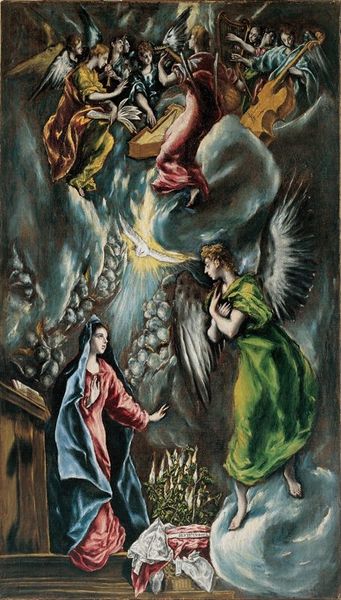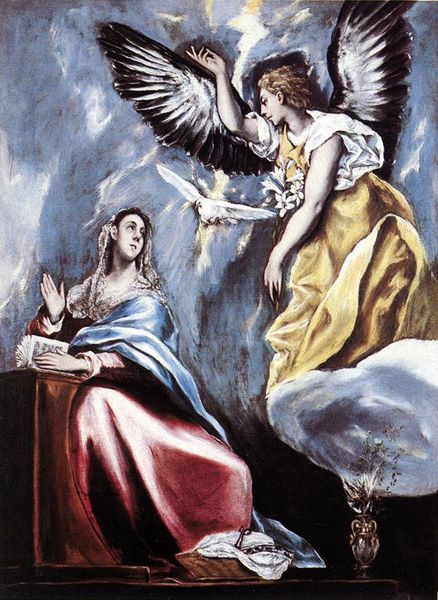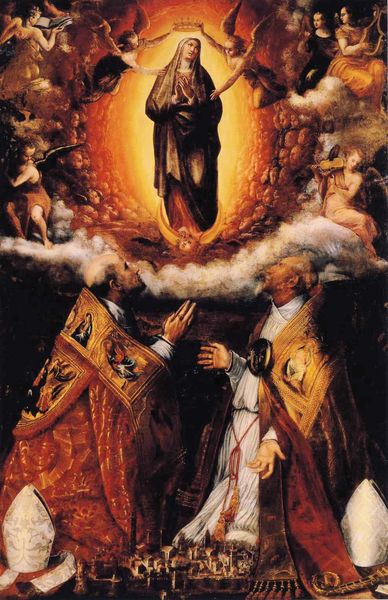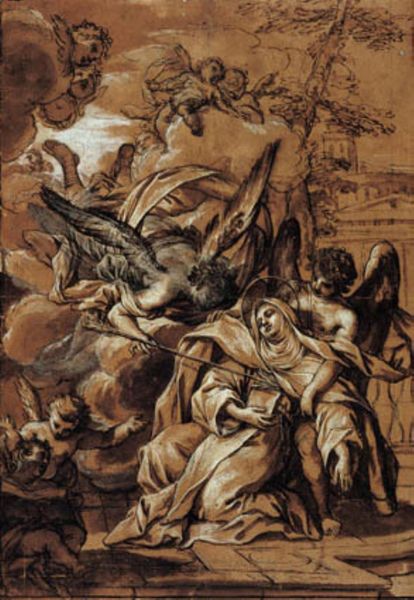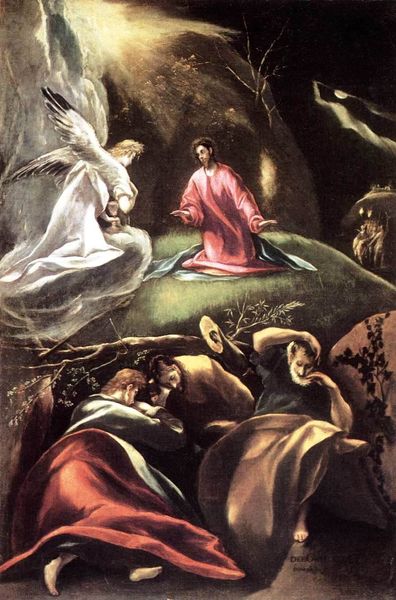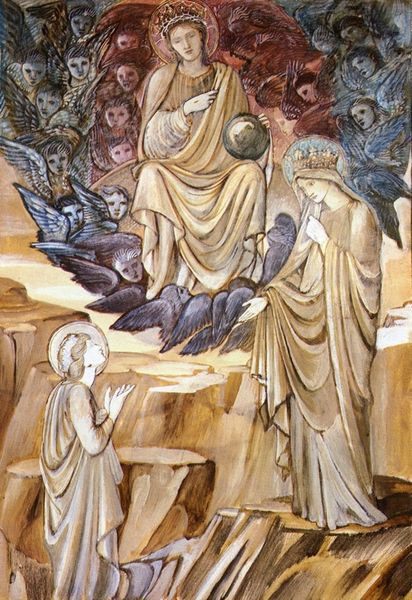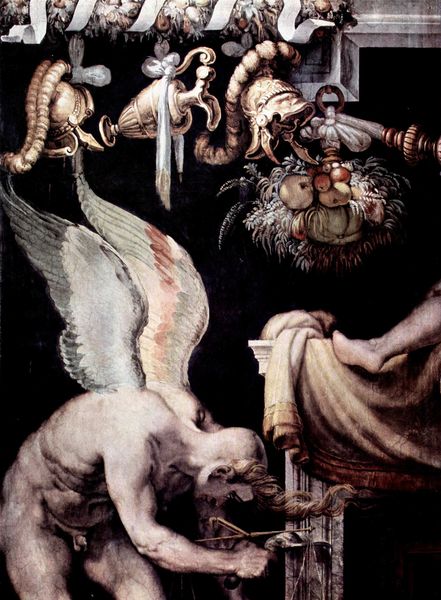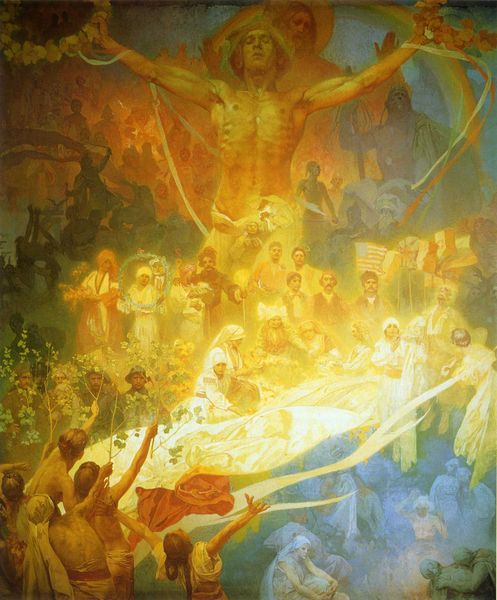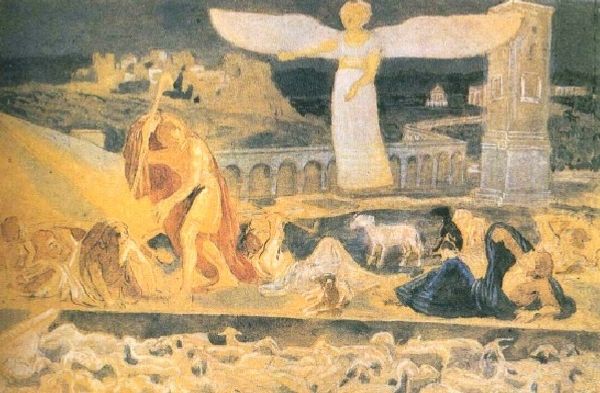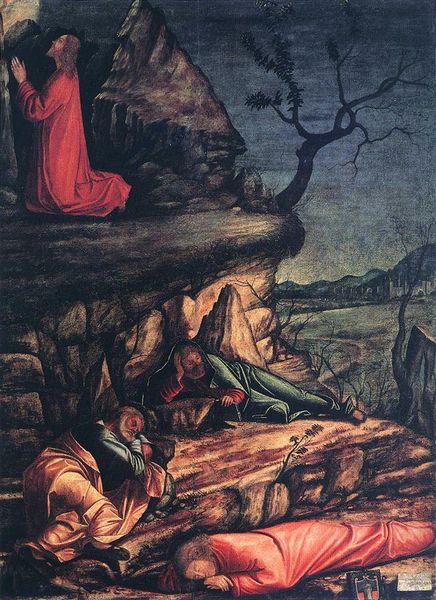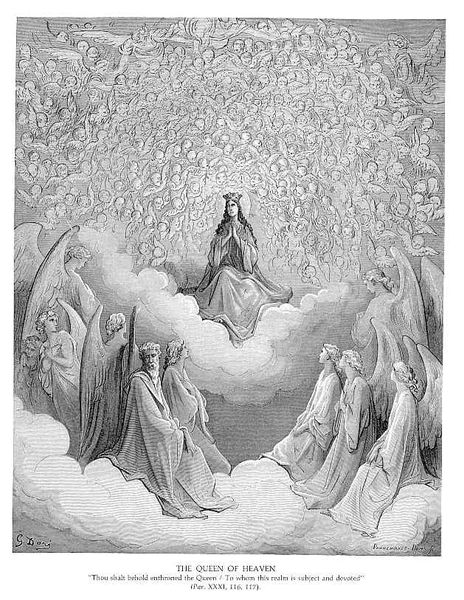
Dimensions: 114 x 67 cm
Copyright: Public domain
Curator: Let's take a look at "Annunciation," an oil on canvas painted by El Greco around 1598. It currently resides in the Thyssen-Bornemisza Museum in Madrid. Editor: It's… intense. The elongation of the figures and the vibrant, almost clashing colors create an incredibly dramatic and otherworldly effect. Curator: Absolutely. El Greco was a master of Mannerism, which prized artificiality and emotional impact over naturalism. We see that here in the almost flame-like quality of the figures and the dynamic composition. It rejects Renaissance ideals. Editor: I’m particularly drawn to the symbolism. The lilies, of course, represent the Virgin Mary's purity, and the dove signifies the Holy Spirit. The angels above are playing instruments – they visually represent the music of heaven descending upon Mary. Curator: Exactly! The choice to depict angels with such Western instruments—harps and the like—grounds the spiritual moment in contemporary Venetian musical practices of the period. It links Mary to a familiar, comforting tradition for El Greco’s audience. We have to consider that, like his movement to Spain, he always was referencing and remembering the place that shaped him. Editor: The swirling cloud forms lend the entire scene a sense of ecstatic release and otherworldliness. Even the Virgin Mary herself doesn't look necessarily like how others before him presented the moment, which strikes me as intentional. Curator: Indeed. El Greco’s highly individual style certainly diverged from traditional depictions. His arrival in Toledo, a deeply spiritual center during the Counter-Reformation, clearly impacted him as well. Painting something fresh was imperative for the social and political conditions to that context. Editor: So, considering the way light catches the angel Gabriel’s form, combined with Mary’s open gesture and slight surprise, this piece really succeeds in imbuing a familiar religious scene with new energy, fresh symbolism and the artist’s clear and individual vision. Curator: I agree, it underscores the interplay between artistic innovation and the demands of religious and cultural context. A piece of art which clearly understands the period it occupies.
Comments
No comments
Be the first to comment and join the conversation on the ultimate creative platform.
